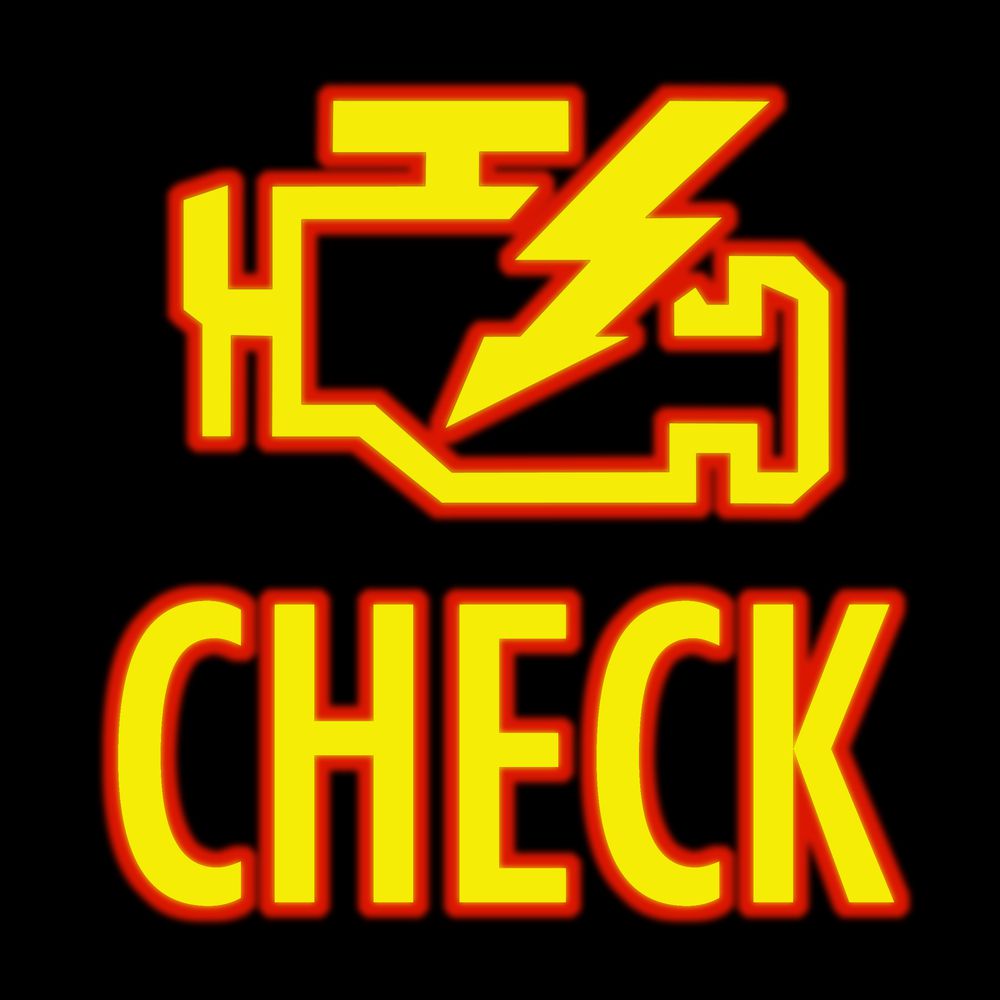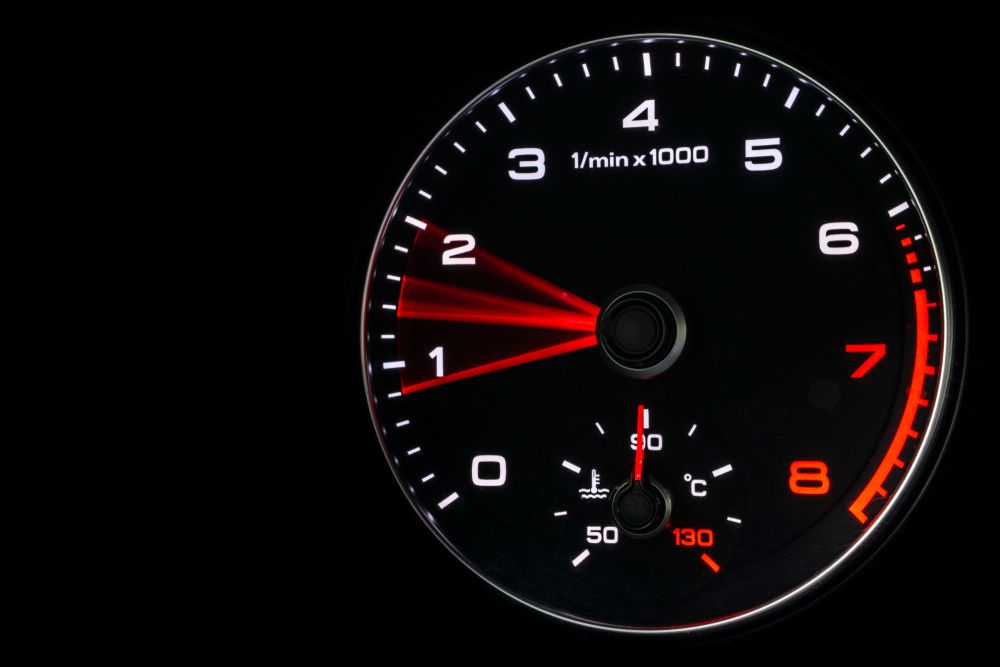BMW is a luxury automotive brand constantly integrating cutting-edge
technology into its cars. One of the newer features of these cars is “limp
home mode.” However, many BMW owners have wondered: “what is limp mode
BMW?”
BMW's limp mode is a feature that is triggered when the car's computer
detects an issue in the engine or the transmission. When the BMW is going
into limp mode, the car suddenly slows down, and the driver will need to
head to their nearest auto repair shop or stop in a safe area.
BMW limp home mode is an incredibly important feature that could save your
car from further damage, so make sure you fully understand how the system
works.
 The check engine light will come on when the BMW goes into limp mode.
The check engine light will come on when the BMW goes into limp mode.
What Happens In Limp Mode BMW?
Several different things might happen when your BMW goes into limp mode.
These features protect the car while allowing you to drive the vehicle to a
safe area or the nearest auto repair shop.
Limp mode can be recognized by one or more factors: check engine light,
reduced speed, inability to shift past third gear, and a lowered RPM limit.
Your BMW may also shut off other features around the car, such as the air
conditioning, the vehicle won't use the turbo boost in turbo engines, and
any other component that is drawing necessary power will also be
deactivated.
1) Check Engine Light
The first thing you will notice from the driver's seat when your BMW goes
into limp home mode is that the check engine light will illuminate. This
means there is likely a faulty engine sensor or a problem with the
transmission system.
2) Reduced Engine Power
The limp mode will also cause your engine to have reduced power. Having
reduced engine power will help to protect the vital internal components,
especially if one of these is causing an issue. The vehicle's computer will
automatically limit the engine power.
 In limp mode the rpm limit is reduced.
In limp mode the rpm limit is reduced.
3) Lowered RPM Limit
When the car's limp mode is activated, the vehicle's computer will also set
a lower RPM limit to prevent the engine from working too hard. As a result,
your BMW will likely be running below 2500 RPM when it is in limp mode.
4) Stuck In Lower Gears
Once your BMW has triggered limp home mode, you'll notice that your car
will be unable to shift gears over third. This is because one of the
functions of limp home mode is to keep the car in lower gears and prevent
it from shifting gears in case the automatic transmission is causing
problems.
How Fast Will A BMW Go In Limp Mode?
When the car is in limp mode, its speed will be limited. You won't be able
to drive your BMW faster than 45 miles per hour when the limp mode is
active. Driving the car any faster could cause further damage to the
internal components.
Can You Drive A BMW In Limp Mode?
While you can drive a BMW in limp mode, it should only be driven to a
mechanic who can take a look at your car. The car should not be driven for
more than 37 miles after it has triggered limp mode.
Limp mode is designed for the driver to get to a safe location as soon as
possible to avoid any further damage being done to the car. In the ideal
scenario, you would drive your BMW to the nearest auto repair shop.
Limp mode is triggered when a problem has been detected in the car, so
driving it slowly and gently while this mode is active is important. Trying
to drive the vehicle faster could only put it more at risk of being
damaged.
What Causes Limp Mode To Come On?
There are several different causes of limp mode in your BMW. The system is
used to protect the car when something goes wrong. The causes of limp mode
can vary from faulty engine sensors, issues with the transmission valve
body, incorrect brake system wiring, and even something as simple as just
the battery running low on power.
As soon as the limp mode has been activated, it's recommended to head to
your nearest mechanics to have your car inspected. To be safe, you need to
have every integral part of your car inspected, from the brake system to
the battery cables.
Modern cars are fully controlled by computers, including parts like the
fuel injection, boost control valve, throttle body, and many more, and
there are sensors fitted everywhere.
When the car's ECU detects an issue with a component, the vehicle will go
into limp mode. The car's computer has several codes stored that are
connected to sensors such as the pressure sensor, camshaft position sensor,
boost pressure sensor, and many more.
When the car's ECU picks up a faulty sensor, it will sift through engine
problem codes and trouble codes to determine the severity of the problem.
If the problem is severe, the car will go into limp mode.
 A BMW driving slowly in limp mode.
A BMW driving slowly in limp mode.
How To Bypass BMW Limp Mode?
When the limp mode feature has been activated on your car, there is a
severe error signal from one of the components that need to be addressed.
Therefore, when attempting to bypass limp mode, the first step is to pull
over in a safe area, especially if the check engine light is on.
Ideally, switch off the engine and let the car rest for around five minutes
or until the engine light switches off. This will give the car's computer
time to assess the potential problem. In the meantime, it's a good idea to
check the engine oil levels and the levels of other engine fluids.
You should also check underneath the car to ensure there is no leak. Limp
mode can often be activated by a transmission control unit that detects a
transmission fluid leak or any other form of damage.
In some cases, it could simply be a faulty sensor such as the throttle
position sensor, camshaft position sensor, mass air flow sensor (also
caused by a boost leak), or the low priority sensor. This brief stop can
sometimes allow the car's systems to reboot, and any faulty sensors can be
reset.
If you don't see any physical damage to the outside of the car, and all the
engine fluids seem normal, you can try to turn on the engine again. If you
clear the check engine light and exit limp mode with a brief pause, still
take your car in for a check-up, just in case.
Can BMW Limp Mode Be Fixed?
BMW limp mode can be fixed. It's highly recommended to take your car to a
professional who can thoroughly inspect the vehicle and identify the
problem. If you cannot drive the car or don't want to take the risk, give
them a call to come to you.
When the car is in limp mode, only drive it up to 37 miles per day for up
to three days. While the vehicle is in limp mode, there is a fault that
needs to be addressed as soon as possible.
The first step to identifying the problem that triggered limp mode is to
check the car's ECU and engine problem codes. The issue will likely show
up, allowing the technicians to solve the problem.
It's not always the engine and the transmission that might be causing limp
mode to be activated, though. Often it's entirely different, like incorrect
brake system wiring or even battery acid leaks.
That's why it's important to get your car to a professional for a thorough
check-up!
Four steps to getting out of limp mode
With your BMW in limp mode, you could be left stranded. You may need to
find a quick fix to get the car out of limp mode and drive it to a trusted
mechanic. Follow the steps below:
1. Pull over and switch off the engine
Make sure to pull over to the side of the road in a safe area. Switching
off the engine will allow it to rest and analyze which components are
causing trouble. It could be anything from an error in boost deviation to
sensors.
2. Clear check engine light
Be sure everything is fine in the engine. Check all engine fluids, such as
oil and water. Hard reset the car's computer by disconnecting both battery
cables and holding them together for 30 seconds. It will drain the residual
power used to store the engine trouble codes, causing limp mode to be
overridden.
3. Start the engine
Once you've reconnected the battery and checked that everything is fine,
restart the engine and wait a few minutes to see if the check engine light
is gone and the car has exited limp mode.
4. Take the car for a check-up
Make sure to take the car in for a thorough inspection.
Conclusion
Many people have been wondering: “what is limp mode BMW”? The limp mode
feature in BMW is a safety feature designed to protect your car when it has
a mechanical failure. Limp mode will automatically slow the vehicle down
and force the driver to find a safe place to stop.